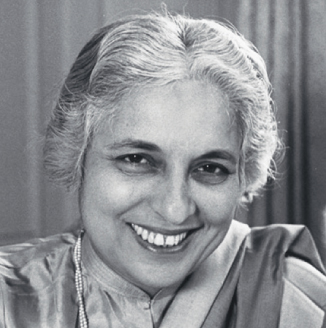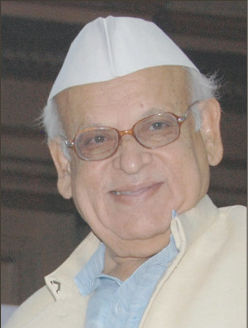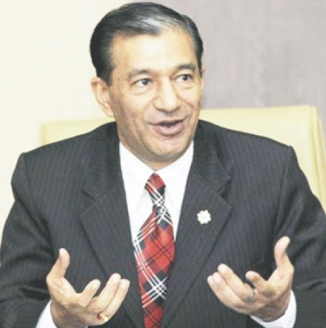Governors Over the Years: From Stalwarts to “Courtiers”
Those were the good old days when the governors were men and women of letters and of unimpeachable integrity. Women like Sarojini Naidu, Vijayalakshmi Pandit and Padmaja Naidu performed their gubernatorial duties with much dignity. And great men like KM Munshi, Sir HP Mody, VV Giri, Sir Girja Shankar Bajpai, Dharam Vira and Govind Narain walked like Colossus in their respective Raj Bhawans. But alas there has since been much devaluation in the calibre of the governors who subsequently held gubernatorial positions or are currently occupying many a stately Raj Bhawan.
By Raj Kanwar
IAN India Correspondent
Who is qualified to become a state governor in India? The Constitution says that “he must at least be 35 years of age and a citizen of India.” It doesn’t lay down any qualifications as to education or experience. By this yardstick, almost every third Indian is constitutionally eligible to be appointed a governor. To the best of my belief and memory however, no one below the age of 60 or so has ever been made a state governor. Ironically, this relatively young age of 60 is intended for those bureaucrats who had managed to earn such a highly prized sinecure for the “services rendered” in the course of their careers. The politician, who is past his or her ‘use-by date’, too is a favorite for the tenancy of a Raj Bhawan. At times, retired army generals or their counterparts from Navy or Air Force also get a look in and given the gubernatorial assignment.
Thus the appointment last week of four governors once again brought to the fore the controversy relating to the ‘qualifications’ of a governor. It is no secret that the governors are appointed purely on the whims and fancies of the powers-that-be at that point of time. More often some of the choices come as a surprise but a little digging would show a ‘godfather’ lurking somewhere in the background. Fortunately, the choice of the governors in the first two decades after 1947 broadly fell on eminent public men and women. Note that the first Uttar Pradesh governor was no less a person than Sarojini Naidu, famously known as the ‘Nightingale of India’; in fact, she was the first woman president in 1925 of the Indian National Congress. It was unfortunate that she did not live to complete her tenure and died in 1949. Other equally eminent women who were privileged to adorn gubernatorial office were Sarojini Naidu’s daughter Padmaja (West Bengal), Vijayalakshmi Pandit (Maharashtra) and Sharda Mukherjee (Gujarat) wife of Air Marshal Subroto Mukherjee.
In the next round of woman governors, Ram Dulari Sinha (Kerala), Rajendra Kumar Bajpai (Puducherry), Sheila Kaul (Himachal Pradesh), Rama Devi (Himachal Pradesh & Karnataka), Pratibha Patil (Rajasthan) and Kamla Beniwal (Gujarat) were Congress leaders of lesser prominence who then needed to be rehabilitated. They neither distinguished nor disgraced themselves and quietly demitted their posts when their term ended. Sarla Grewal née Khanna was perhaps the first woman civil servant to have been made a governor. She was in fact the second woman in the country to have joined IAS in 1952 and had retired as the Cabinet Secretary. I had known her briefly when she was the deputy commissioner in Shimla. The appointment of VS Ramadevi as governor of Himachal Pradesh in 1997 too had attracted unseemly attention since earlier she had held, albeit briefly, the office of the chief election commissioner of India.
Gradual erosion
Unfortunately, there has been gradual erosion in the “qualifications” of woman governors after the first two hoary decades. Imagine the likes of the lucky Pratibha Patil who even later rose to become the President of India. She did not distinguish herself as a governor. The less said the better about her performance as the President. Happily, Margaret Alva is the only current governor among the women who has bestowed much dignity and grace upon her office. Kamla Beniwal (Gujarat) was in the eye of storm in Rs. 1000-crore Jaipur Development Authority land scam.
The choice and the “qualifications” of governors of late have become very questionable since these appointments are not strictly made on merits; the only criterion is the “loyalty and the services rendered” by a favourite, and the need to reward and rehabilitate him or her. Even though the office of governor, by and large, is symbolic, yet its importance simply cannot be sidelined. Governors have to possess high educational qualifications and innate charm and grace; they also must be men and women with poise and of unimpeachable lineage and need to conduct themselves with dignity and grace. Fortunately, our current governor Dr. Aziz Qureshi is a suave man of letters with a dignified demeanour. He has been gracefully conducting himself and has made many friends.
Highly educated governors
Those earlier governors were refined and highly educated men of great distinction. Consider stalwarts like KM Munshi, Sir HP Mody, VV Giri who acquitted themselves with much grace and dignity during their tenures as the governor of Uttar Pradesh. Munshi was the most profound of the lot and did his best in promoting excellence in the universities in the state. He was instrumental in introducing the concept of “Inter-university Chancellor’s Camp” in June 1953 at which outstanding students were invited to spend a fortnight with him at Raj Bhawan, Nainital. Some of the students in the camp like KC Pant, Mahesh Prasad, Otima Mukherjee rose to greater heights in their later career. I too was at the camp as a representative from Agra University which at that time was perhaps the largest affiliating university in the country.
Some other notable governors in those early years were civil servants of the eminence of Sir Girja Shankar Bajpai, Dharam Vira and Govind Narain. There were also many outstanding leaders such as MM Pakwasa, Sri Prakasa, Raja Maharaj Singh, Pattabhi Sityaramayya, Bhagwat Dayal Sharma, Kailash Nath Katju, Asaf Ali, Sadiq Ali, Shankar Dayal Sharma, Bhim Sain Sachar et al. Other equally well known governors were Gurmukh Nihal Singh, Sampurnanand, Sardar Hukam Singh, Balram Jakhar and some more of equal calibre.
Ashwani Kumar’s choice unfortunate
The appointment of Ashwani Kumar, a former CBI director, as the new governor of Nagaland has been described by many critics as “unfortunate and improper”. Almost all the opposition parties have accused CBI of being “a handmaiden and B team of the government”. Thus the choice of Ashwani Kumar falls flat on the yardstick of “propriety”. Interestingly, Ashwani has taken over from Nikhil Kumar, a fellow police officer. Nikhil has a highly pedigreed lineage. His grandfather Dr. Anugrah Narayan Sinha and father Satyendra Narayan Sinha were both notable leaders and MPs for multiple terms. His mother Kishori Sinha and wife Shyama Singh too were members of the Lok Sabha. What an incredible hereditary wonder !! For Nikhil who was himself one time a police commissioner of Delhi, it surely must be a big rise.
It is thus important that some sort of “code of selection” be put in place for governors. Looking at the “qualifications” of about 100 past and current governors, it looks that anyone of us would easily “qualify” to be appointed as a governor. In fact, the qualifications of many of us are far superior to those of some of these “worthies” except that we would lack a “godfather”.
Raj Kanwar is a Dehra Dun based freelance journalist and writes columns on current affairs for local and national newspapers. He is also the author of the official history of ONGC, which is one of the top three companies in India in terms of market capitalization. Kanwar is also associated with World Oil as its Contributing Editor for South Asia.



